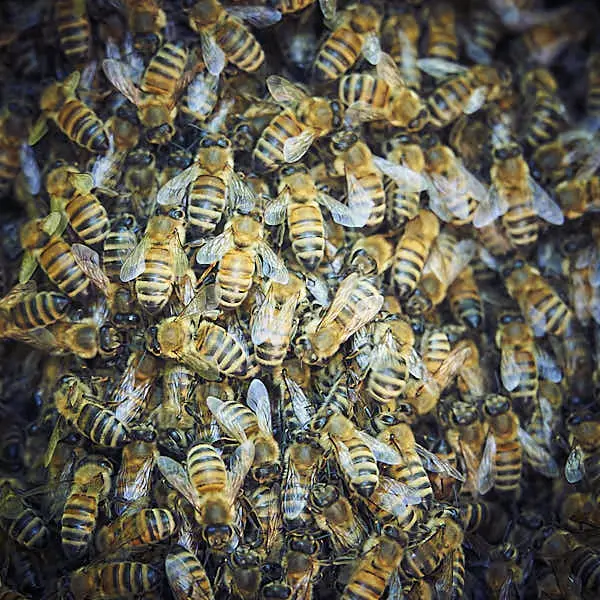What do a sunflower, hurricanes, and the Mona Lisa have in common? The Fibonacci Spiral. Also called The Golden Ratio, it is a principle of composition that is based on a mathematical sequence.
The Fibonacci Spiral is believed to represent perfect Beauty and Harmony. It doesn’t just look pleasing to the eye, but if you measure it you will actually detect a pattern or algorithm.
The concept captivated mathematicians, philosophers, and artists who hailed the Fibonacci spiral as “Nature’s Secret Code.” In this article, let’s look at this formula and how it can train your eye and inspire your photography.
What is the Fibonacci Spiral?
The Fibonacci Spiral is based on one of the most famous mathematical formulas in the world: The Fibonacci Sequence.
You may recall this numbered list from your high school textbooks: 0, 1, 1, 2, 3, 5, 8, 13, 21, 34, and so on. Each number is the sum of the two numbers before. 0 + 1 = 1, 1 + 1 = 3, 2 + 3 = 5, etc. It can go on infinitely, following the formula Xn+2 = Xn+1 + Xn.
If you graph this sequence, you will get a logarithmic spiral, which can be found in many things in Nature: the seedheads of a sunflower and the layers of a pinecone, the shape of hurricane or our galaxy, the curves of a nautilus shell and our inner ear.
If you also count the petals of any flower, the total will always be one of the numbers in the Fibonacci sequence. For example, buttercups have five petals, and daisies have 34. And according to botanists, these numbers don’t just create aesthetically pleasing symmetry but have a practical purpose: each petal is positioned in a way that it captures the most sunlight.
For philosophers and theologians, this was an affirmation of the logic and intelligence in creation. Thus, Fibonacci changed from being an obscure mathematical formula to a more profound expression of Divine Harmony.
How is the Fibonacci Spiral used in composition?
The Fibonacci sequence can be translated into a spiral, or a square whose lengths is one of the Fibonacci number.
Imagine dividing a frame into several squares, “stacking” the smaller squares inside the larger one. Then draw an arc, starting from one of the corners, then following the different intersection points until it curls inwards—much like the shape of a nautilus shell.
Artists have used this as a guide for composing artwork, and how they position subjects or choose a focal point.
- The most important detail are placed in the center or smallest area of the coil. If you look at the Mona Lisa, her face falls exactly in that spot.
- The spiral acts like a margin, where anything outside it is left purposely bare or unfocused.
- The intersections help define where to place multiple subjects (such as two or more people in an candid photo or an action shot.
What’s the difference between the Fibonacci Spiral and the Golden Ratio?
This Fibonacci Spiral is sometimes referred to as The Golden Ratio (1:1.618). Some digital cameras and editing software already have it as a built-in feature.
The ratio is derived from the Fibonacci sequence, too. Take any two sums that are next to each other, and divide the larger number by the smaller number. The answer will always be 1.618.
For example, the sequence: 5, 8, 13, 21
- 5+8=13 and 8+13=21
- 13 / 21 = 1.618.
And in another sequence: 13, 21, 34, 55
- 13+21=34 and 21+34=55
- 55/32 = 1.618
Like the Fibonacci Spiral, there are many examples of this in Nature. It’s the distance between your fingers, and the features in your face.
The Golden Ratio is used in painting, photography, architecture, and even music. It’s used to measure the proper distance or proportion between two objects, to achieve perfect balance and proportion. It can also be very helpful in cropping photos
Which artists have used the Fibonacci Spiral?
During the Renaissance period, multi-disciplinary artists like Leonardo da Vinci turned to Mathematics and Philosophy for inspiration. He used the Fibonacci Spiral in two f his most famous works: the Mona Lisa and The Last Supper.
The proportions of the Fibonacci Spiral can also be found in abstract art, like Salvador Dali’s The Sacrament of the Last Supper, and the abstract art of Mark Rothko and Piet Mondrian.
The great photographer Henri Cartier-Bresson, who preferred to use a simple camera and focus primarily on composition rather than equipment, used the Fibonacci Spiral in many of his works—from dramatic black-and-white landscapes, busy street scenes, and compelling portraits.
When is the best time to use the Fibonacci Spiral?
This is not the only guideline in composition. Alternatives include the Rule of Thirds, or the Phi Grid.
However, there are situations where the landscape or photo subject has a lot of natural curves and movement. For example, if you’re photographing a top view of a spiral staircase, or a fashion model with an elongated and exaggerated pose and a flowing dress.
Since the Fibonacci Spiral is naturally found in nature, many photographers also like to use it in landscape photography and macrophotography. Try taking a close-up photo of flower petals, succulents, shells—part of the challenge is identifying the “hidden code” in this everyday phenomenon.
If you’re not sure when to use the Fibonacci Spiral, experiment! Try several composition techniques, and apply the Fibonacci Spiral to find alternative angles. Through practice, you’ll develop your natural eye, and instinctively know which is better for your subject.

